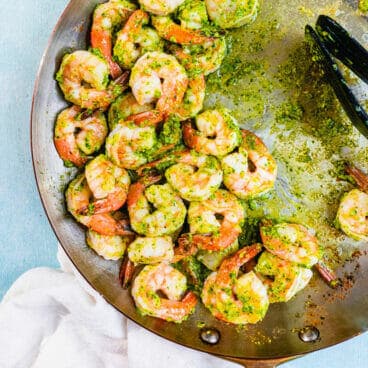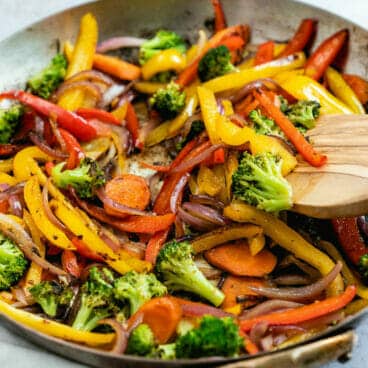Recipes by vegetable
Not looking for mixed vegetables? You can make sauteed vegetables by cooking just one type of vegetable at a time. So why not do a total makeover? These sauteed vegetables are beautifully colored, bursting with flavor and crisp tender in texture: the perfect easy and healthy side dish! Alex and I have made this recipe for our family over and over and it’s always a hit. To sauté you’ll need a good skillet and a fat to use for cooking, typically either olive oil or butter. Sauteing browns the outside of the food, which helps complex flavors to develop. This is called the Maillard reaction, the scientific term for browning food. Here are the basic steps for sauteed vegetables, and the approximate timing for each type of vegetable:
Frozen peas: 2 minutes Greens (kale, spinach): 3 minutes Mushrooms: 7 minutes Broccoli, asparagus: 8 minutes Cauliflower, onions: 10 minutes Bell peppers: 10 to 12 minutes Carrots: 12 minutes
This recipe we customized so you can cook all the vegetables at once! We also wanted to pick a rainbow of colors to make a nutritious and visually appealing vegan side dish. Here’s what we chose:
Bell peppers: Sweet and mild bell peppers are loaded with Vitamin C. A medium red bell pepper provides a whopping 169% of your daily vitamin C. (Source) Red onion: Red onion adds a savory complimentary flavoring to the sauteed veggies. Carrot: Carrot brings color, a dose of Vitamin A, and a sweet flavor. (Source) Broccoli: Broccoli adds a splash of green, fiber and protein. We prefer it to cauliflower in a sauté since it cooks faster. Olive oil: Olive oil is our preferred oil for sautéing, due to its neutral flavor and high smoke point. Seasonings: Kosher salt and a bit of dried oregano to intensify the flavors.
Aluminum or copper: You’ll get the best browning on the edges of the veggies when you use aluminum or copper. This type of skillet is fantastic for sauteing and also searing salmon or scallops. Cast iron: Sauteed vegetables also work great in cast iron! It heats well and provides a nice char on the edges. Non-stick: You can also sauté in non-stick pans, but keep in mind that the veggies won’t brown as much as with the other surfaces.
Frequently asked questions
Add 1 tablespoon taco seasoning or fajita seasoning to the mix. Add Cajun flavor with Cajun seasoning (spicy) or blackened seasoning (mild). Try Italian seasoning or Greek seasoning, Mediterranean-style seasoning blends that add an irresistible nuance. Old Bay seasoning is an American blend that works well for both seafood and vegetables.
Pasta: Serve alongside broccoli Mac and Cheese, baked rigatoni, zucchini lasagna or white sauce pasta. Chicken: These vegetables fit right alongside baked chicken, Greek chicken, chicken piccata, baked chicken thighs, lemon garlic chicken or grilled chicken. Salmon or fish: Try pairing with Cajun salmon, baked salmon, pan seared salmon or pesto salmon. Shrimp: Add pesto shrimp for an easy meal, or serve with shrimp pasta or shrimp pesto pasta.
5 from 1 review Variation: Try adding one of the following seasoning blends to taste: fajita seasoning, taco seasoning, Cajun seasoning, Italian seasoning or Greek seasoning, or Old Bay.

























